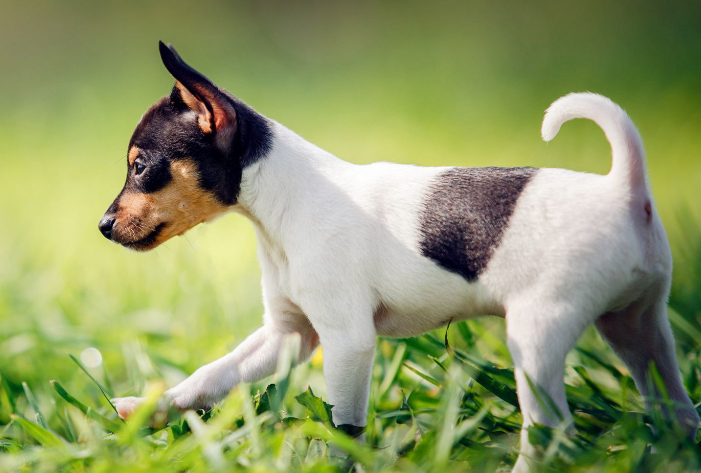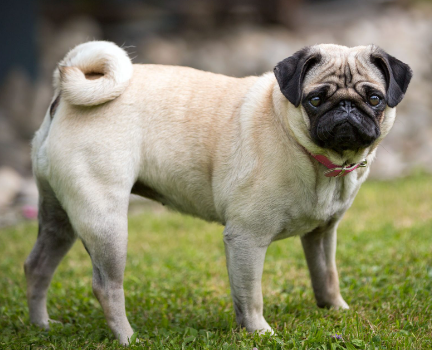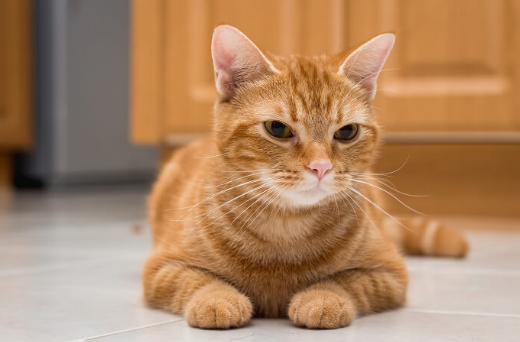The British Longhair is a medium-sized cat breed known for its muscular build, short stature, and fondness for relaxation. This feline possesses a robust physique, characterized by a broad chest, sturdy legs, and tidy round paws, all concealed beneath a resilient, sleek, and weather-resistant coat. The semi-long-haired fur, which is ideally dense, extends gracefully over the legs and ears, contributing to the cat’s overall impressive appearance.
- Origin: United Kingdom
- Size: Medium
- Weight: 8–16 pounds
- Lifespan: 15-17 years
- Colors: Solid, tabby, parti-color, and dilutes.
Breed characteristics
British Longhair cats inherit traits from both British Shorthair and Persian breeds, resulting in composed and even-tempered companions suitable for most households. These felines, like many others, crave attention and affection from their human companions, particularly through regular stroking and engaging play sessions.
Ensuring ample playtime is crucial, even for indoor cats, as those with outdoor access also relish interactive play with their owners. The British Longhair is notably gentle and thrives on mental stimulation. Enrich their environment with a variety of toys, ranging from classic mouse-shaped playthings to balls and intelligence games designed for both feline and canine entertainment. Introducing activities that mimic hunting, such as hiding food, can particularly captivate their interest.
While it’s a common misconception that cats are untrainable, it holds true that their training differs from that of dogs. Cats, including the British Longhair, are swift learners, emphasizing the importance of consistency in teaching them desired behaviors. For instance, discourage table begging to maintain discipline, a particularly relevant practice for indoor cat breeds, as their sedentary lifestyle may make them more susceptible to weight issues.
| Apartment Living: 5Point | Potential for Weight Gain: 4Point |
| General Health: 3Point | Intelligence: 3Point |
| Child Friendly: 5Point | Tendency to run away: 2Point |
| Amount of Shedding: 4Point | Playfulness: 3Point |
| Energy level: 3Point | Dog friendly: 3Point |

History Of British Longhair Cat
The British Longhair, a breed with relatively recent origins, has a direct lineage traced back to the British Shorthair cat. The aftermath of the First World War witnessed a significant decline in the British Shorthair population, prompting dedicated breeders to embark on efforts to preserve these remarkable felines, alongside various other breeds such as Persians.
Despite being exceptional companions with qualities akin to the beloved British Shorthairs, Longhair kittens did not meet the criteria for inclusion in the same category. The resilience of breeders during this period played a crucial role in safeguarding these cats.
The challenges persisted during World War II, leading breeders to once again intervene to save the British Shorthair breed. Crossbreeding efforts involved pairing British Shorthairs with Burmese, Chartreux, and Russian Blue cats, among others. Notably, kittens with medium to long hair did not gain acceptance into the breed registry.
Despite their historical roots reaching back to the first half of the 20th century, formal recognition of the British Longhair breed only came in 2009 by TICA (The International Cat Association). It’s worth noting that the Cat Fanciers’ Association does not currently recognize the British Longhair cat.
Appearance
British Longhair cats are of medium size, boasting luxurious long fur and endearing, rounded faces. Their charm is enhanced by large, round eyes, sweet expressions, and plush coats that conceal muscular and robust bodies. Typically weighing between 8-16 pounds, males generally tip the scales on the heavier side.
The thick and straight coats of British Longhairs stand away from their bodies, creating an illusion of greater size. Despite their fluffiness, these cats possess soft and dense fur that comes in various colors such as black, lilac, chocolate, or golden. Patterns may include bi-color, ticked, or colorpoint. While they shed less than some other longhair breeds, a substantial undercoat contributes to their overall density.
In terms of appearance, British Longhairs draw comparisons to both British Shorthairs and Persian cats. This resemblance is not coincidental, as British Longhairs adhere to the same breed standard as British Shorthairs, diverging primarily in the length and softness of their coats. The majestic mane characteristic of the British Longhair is a testament to their Persian cat lineage.
Temperament
The amiable nature of British Longhair cats is evident in their warm, smiling faces. Renowned for their tranquil and composed disposition, these felines are often characterized by a laid-back and tolerant attitude. While some may label them as “lazy” due to their reluctance to engage in work, they exhibit occasional playful kitten-like behavior, although they are notably less active compared to many other cat breeds and tend to become even less so with age. Remarkably, they adhere to minimal sleep patterns by feline standards.
Beyond their role as couch companions, these affectionate cats possess high intelligence and sociability. The British Longhair is a devoted breed that enjoys the company of people and adapts well to various environments. Despite their social nature, they harbor an independent streak and find contentment in pursuing their own activities. Aptly described as little “private investigators,” these cats may exhibit curious behaviors such as clawing at personal belongings or closely observing their human companions.
Despite their affable nature, British Longhair cats, while affectionate and tolerant of children, prefer not to be overly handled. Parents are advised to educate young children on interacting with these adorable cats, encouraging floor-level interactions for petting and playtime instead of picking them up.
Personality
During their kittenhood, the British Longhair exudes playfulness and irresistible charm, characterized by wide eyes and a fluffy coat. As they mature, their demeanor tends to shift toward a more contemplative and leisurely disposition, favoring strategic planning over active participation in feline mischief. While they appreciate spending some time outdoors, their trusting and deliberate nature may render them less reactive, necessitating supervision and, ideally, a cat-proof garden or enclosed ‘catio’ for safe exploration in the broader environment.
Despite their undemanding nature, the British Longhair, being a quiet and unassuming cat, can be easily overlooked. Therefore, it’s essential to ensure they receive ample social contact and dedicated “family time” to meet their need for interaction and companionship.
Health
While Highlanders generally boast a straightforward health profile, they are susceptible to common ailments shared by their short-haired counterparts. Similar to the British Shorthair, indoor-predominant Highlanders may grapple with obesity, presenting a significant health concern. Combatting this issue involves incorporating regular exercise into their routine, and encouraging interactive play to promote their well-being.
The British Longhair, due to its lineage as a cross between British Shorthair and Persian cats, is increasingly prone to polycystic kidney disease. This hereditary condition, prevalent in the parent breeds, manifests in British Longhairs, with kidney cysts developing early and detectable through ultrasound examinations.
Additionally, hypertrophic cardiomyopathy (HCM), a heart disease, is a frequent occurrence in British Longhairs. The key to addressing this condition lies in routine heart ultrasounds, enabling early detection and the exclusion of affected individuals from breeding programs. While there is no cure for hypertrophic cardiomyopathy, early identification allows for potential interventions to extend the lives of affected cats.

Best Care Tips For British Longhair
Maintaining the distinctive long locks of the breed can pose a grooming challenge. To keep your British Longhair’s coat in top condition, gentle brushing with a bristle brush twice a week, focusing on small sections, is recommended. Bathing needs are generally infrequent as British Longhairs often handle this task themselves. However, their tendency for self-grooming can lead to the ingestion of a significant amount of hair, resulting in hairballs. To address this, consider more frequent brushing or administering a hairball relief treatment.
Given the breed’s inclination toward a more laid-back lifestyle, owners play a crucial role in promoting activity. Encourage regular play sessions, provide cat trees for climbing, and engage them with interactive cat toys. According to DVM, CVJ, and Royal Canin Veterinary Partner Natalie L. Marks, managing their weight is crucial due to their lower activity levels as adults compared to other cat breeds. Incorporating daily exercise becomes essential to prevent weight gain and promote overall well-being.
Best Food For Golden British Longhair
When it comes to nutritional requirements, the British Longhair aligns closely with other cat breeds. Optimal nutrition involves a foundation of high-quality wet or dry food rich in meat and protein, complemented by an ample supply of fresh water. Prioritize food with minimal plant-based ingredients or by-products, placing them at the bottom of your cat’s ingredient list.
To facilitate the elimination of ingested fur, consider providing your Highlander with food featuring added benefits. Options include dry food tailored for long-haired cats or treats designed to support the natural shedding process, aiding in the prevention of hairballs. For cats averse to hairballs, cat grass serves as an additional favorable choice.
In instances where your veterinarian has diagnosed hypertrophic cardiomyopathy (HCM) or kidney cysts, tailoring your cat’s diet to address these conditions becomes paramount. Seek specific dietary recommendations from your trusted vet for a targeted approach.
Wishing you and your delightful British Longhair a wonderful and fulfilling life together!
Feeding
Due to the predisposition of British Longhairs to overeating, it is crucial to carefully manage their diet to prevent excessive weight gain.
Each British Longhair is unique, with individual preferences, dislikes, and specific dietary needs. Despite these variations, it is essential to recognize that cats are carnivores requiring 41 different and specific nutrients from their food. The quantities of these nutrients differ based on factors such as age, lifestyle, and overall health. Consequently, the nutritional balance required for a growing, energetic kitten varies from that needed by a less active senior cat. Additionally, maintaining an “ideal body condition” in accordance with dietary guidelines and accommodating individual preferences, whether for wet or dry food recipes, is important in ensuring the overall well-being of the cat.
Grooming
British Longhairs should undergo daily grooming, especially when they are still small kittens, to ensure they become accustomed to and comfortable with the process before developing a dense coat. While they may attempt self-grooming, it is unlikely to be entirely effective. Regular checks around the face for food residue and eye discharge, as well as inspecting their rear for cleanliness after defecation, are recommended.
It’s important to note that a greasy coat could signal a decline in self-grooming, potentially indicating poor health or excess weight. Like all cats, British Longhairs benefit from routine vaccinations, parasite control, and annual veterinary health examinations. These practices contribute to maintaining the overall well-being of the cat.
Training
British Longhairs display intelligence and sociability, rendering them easily trainable. Initiating training sessions at a young age to instill the habit of receiving and following commands contributes to fostering positive behavior in these cats.
Exercise
Given the penchant of British Longhairs for relaxation and their inherently lower activity levels compared to various cat breeds, they might require a bit of encouragement to engage in play. Alongside catnip mice and other captivating toys, incorporating a laser pointer and at least one teaser stick can be beneficial. It’s essential to provide all cats, including British Longhairs, with a scratching post and a designated perch, such as a cat tree or window seat, for their enjoyment and well-being.
Adoption Center || British longhair kittens for sale
British Longhair Video
See More Cat Breeds For Further Research
British Longhair FAQs
British Longhair Price
Typically, British Longhair kittens sourced from reputable breeders come with a price range of $800 to $1,200, contingent on the pedigree.
Are British Longhair cats friendly?
Renowned for their high intelligence, sociability, and affectionate nature, British Longhairs are a loyal breed that thrives in human companionship and adapts well to various environments. While they are highly social, these cats also possess an independent streak, finding contentment in pursuing their individual activities.
Is a British Longhair a Persian cat?
Both the British Longhair and Persian cats adhere to the same breed standards, with the primary distinction being the long, soft fur characteristic of the British Longhair, resulting from crossbreeding with Persian cats.
How long do British Longhair cats live?
Best suited for indoor living due to their sedentary lifestyle, a healthy British Longhair typically weighs around 12 pounds, boasting an average lifespan of 18 to 20 years.
Is a British Longhair cat an indoor cat?
Combining traits from British Shorthair and Persian cats, British Longhairs are known for their calm and even-tempered nature, making them well-suited for indoor living in most cases. Like many cats, they relish attention and affectionate interaction with their human companions, particularly in the form of regular stroking and play sessions.












One thought on “Golden British Longhair: World Best Full Information For You…”